Name: Kouros
Date: 600 BCE (Archaic)
Medium: Marble
Location: Greece
Artist: Unknown
Form: 6'6", arms conjoined to thighs
Function: Funerary purpose, votive offerings, grave markers
Content: Stance is similar to Egyptian canon, rigidly frontal, left foot forward, generic idealistic, nude male
Context: Daedalic style
Name: Kroisos
Date: 530 BCE (Archaic)
Medium: Marble
Location: Greece
Artist: Unknown
Form: 6' tall
Function: Funerary purpose, grave markers, votive offerings
Content: Rounded face and cheeks, hair falls naturally, round hips, abs, flesh stayed color of stone while everything else was painted
Context: Compared to Kouros: more natural and proportionate
Name: Lady of Auxerre
Date: 650 BCE (Archaic)
Medium: Marble
Location: Greece
Artist: Unknown
Form: Daedalic Style - mainly decorative, realism
Function: Decoration
Content: Broad head, hair is in layered wigs, clothes do not have folds, geometric/oriental patterns, used to be painted, hand on chest is not proportional because hands are hard to create
Context: N/A
Name: Peplos Kore
Date: 530 BCE
Medium: Marble
Location: Greece, found in the grounds of the Acropolis
Artist: Unknown
Form: Full body of woman, 4' tall
Function: Votive statue
Content: Wearing Peplose - simple, long woolen, belted garments; round, natural face, hair falls naturally
Context: Offering to Athena
Name: Kore
Date: 520 BCE
Medium: Marble
Location: Greece
Artist: Unknown
Form: 1'9.5"
Function: Votive offerings
Content: Clothes - Chiton and Himation; folds in garments, patterns, lifting chiton off the ground with her left hand, left foot forward
Context: Compared to the Peplos Kore
Name: Achilles and Ajax Playing Dice
Date: 530 BCE
Medium: Black figure amphora
Location: Greece
Artist: Exekias
Form: Krater, linear - one story/one register
Function: To hold water or wine
Content: Shape of men mimics amphora, subdued emotions, legs in reflective pose,
Context: Achilles and Ajax are very concentrated, and in Greek culture, concentration is valued, Achilles rolls 4, Ajax rolls 3 and Achilles wins. This is ironic because Achilles ends up losing the war by dying.
Name: Niobides Krater
Date: 450 BCE
Medium: Clay, red figure with white highlights
Location: Greece
Artist: Niobid Painter
Form: Krater, severe style, not linear, no ground line, 3D space and depth
Function: Unknown (maybe to hold stuff)
Content: Two sides: Relaxed and Murder
Context: The Relaxed side: Heracles and Athena, Descent into Hades to rescue Theseus. The Murder side: complex, Niobe bragged superiority because she had 14 kids and the goddess Leto only had two (Artemis and Apollo), Niobe guilty of hubris (extreme pride)
Name: Kritios Boy
Date: 480 BCE
Medium: Marble
Location: Greece
Artist: Unknown
Form: Contrapposto (relaxed stance, shoulders back, hip out)
Function: To display a more realistic portrayal of a human body
Content: Shift in weight - more weight placed on hips
Context:
Name: Doryphorus
Date: 480 BCE
Medium: marble
Location: Greece
Artist: Polykleitos
Form: 2'10", canon for perfection, symmetry to all body parts
Function: To display the ideal male figure
Content: Broad shoulders, thick torso, muscular, warrior/athlete, looking away = thinking, dynamic of movement
Context: Polykleitos made two statues: one according to his canon (Doryphorus) and another based on the people's wants, Doryphorus looked better and more natural.
Name: Parthenon
Date:
Medium: Marble
Location: The Acropolis in Athens, Greece
Artist: Iktinos and Kallikrates
Form: Doric columns outside, Ionic columns in the cella
Function: To house a massive statue of Athena
Content: X=2Y+1 [17 columns on side (x) and 8 columns on the front (y)]; 2 windows in cella
Context: Greeks had just won the Persian War and wanted to show off
Name: Athenos Parthenos
Date: 438 BCE
Medium: Wood, covered in gold and ivory
Location: The Acropolis in Athens, Greece
Artist: Phidias
Form: 38' tall
Function: To celebrate and show off the Greek's power
Content: The Goddess Athena
Context: The Greeks had just won the Persian War
Name: Helios, Horses, and Dionysus
Date: 438 BCE
Medium: Marble
Location: Greece
Artist: Unknown
Form: East pediment sculpture, triangular shape
Function:
Content: Birth of Athena from the head of Zeus. Demeter and Persephone are seated and watching
Context: Part of Lord Elgin's Marbles
Name: Plaque of the Ergastines
Date: 438 BCE
Medium: Marble
Location: Greece
Artist:
Form: Panatheraic Frieze; 3D so that viewers could see it from below; high relief
Function:
Content: Six Ergastines who were responsible for weaving the peplos
Context: Every four years Athenians would hold a procession for Athena where they would place a new peplos on the Athena statue.
Name: Propylaia
Date: 437 BCE
Medium: Marble
Location: The Acropolis in Athens, Greece
Artist: Mnesilkes
Form: Doric Exterior, Ionic Interior
Function: Entrance to the Acropolis, Athenians walked through it during the Panathenaic Festival
Content: Unfinished
Context: Unfinished because of the Peloponnesian War
Name: The Erecthion
Date: 410 BCE
Medium: Marble
Location: The Acropolis in Athens, Greece
Artist: Unknown
Form: Carytids - female shaped columns, Ionic Temple
Function: Tombs and shrines
Content: Carytids, Ionic columns, tombs, and shrines
Context: Marks the spot where Athena beat Poseidon to become patron of Athens
Name: Temple of Athena Nike
Date: 420 BCE
Medium: Marble
Location: The Acropolis in Athens, Greece
Artist: Unknown
Form: Ionic style, Amphiprostyle - 4 columns in the front and 4 in the back
Function:
Content:
Context: Celebrates the Victory over the Persians at the
Battle of Marathon
Name: Grave Stele of Hegeso
Date: 410 BCE
Medium: Painted marble
Location: Greece
Artist: Kallimachos
Form: Relief sculpture
Function: To mark a grave
Content: Woman examining jewelry from a jewelry box handed to her by a servant, could be a dowry
Context: Commemorates the death of Hegeso, the inscription identifies her and her father.
Name: Scraper (Apoxymenos)
Date: 330 BCE
Medium: Marble
Location: Greece
Artist: Lysippos
Form: 6'9", head 1/8 of body
Function:
Content: Thin form, small head, elongated body, eyes closely set, far away look on face
Context: Scrapers scraped off the oil, sweat, and dirt from athletes
Name: Weary Herakles
Date: 320 BCE (Classical)
Medium: Marble
Location: Greece
Artist: Lysippos
Form: Complete sculpture 360 degrees (freestanding figure)
Function: Placed in the Baths of Caracalla in Rome for body inspiration(?)
Content: Muscular Herakles, tired, holding an apple behind his back
Context: IDK
Name: Stoa of Attalos II
Date: 150 BCE (Hellenistic)
Medium: IDK
Location: The Agora in Athens, Greece
Artist: Unknown
Form: Tholos - round temple; stoas, covered colonnades, porticos, doric ground level, ionic second floor
Function: Commercial, religious, civic and social buildings, part of the marketplace of the Acropolis - the Agora
Content: 2 stories, 21 shops
Context: For common people
Name: Alter of Zeus and Athena at Pergamon
Date: 175 BCE (Hellenistic)
Medium: Marble
Location: Pergamon, Turkey
Artist: Unknown
Form: Elevated platform, dramatic stairs, 7'6" frieze over 400 ft long wraps around monument, Ionic columns, high relief
Function: Altar dedicated to Zeus
Content: Gigantomachy
Context: Nike crowns Athena, Gaia looks up in honor and pleads for her sons (the giants)
Name: Gaic Chiefton Killing Himself and His Wife
Date: Hellenistic
Medium: Marble
Location: Pergamon, Turkey
Artist: Epigonos
Form:
Function:
Content: Look at title
Context:
Name: Dying Gual
Date: Hellenistic
Medium: Marble
Location:
Artist: Epigonos
Form:
Function:
Content:
Context:
Name: Nike of Samothrace
Date: 190 BCE (Hellenistic)
Medium: Marble
Location: Greece
Artist: Unknown
Form: Found in situ in Samothrace, Contropposto
Function: Meant to stand in/above fountain
Content: Wet drapery, invisible wind, goddess Nike
Context: Celebrates a naval victory
Name: Aphrodite (Venus de Milo)
Date: 150 BCE (Hellenistic)
Medium: Marble
Location: Greece
Artist: Alexandros of Antioch on the Meander
Form: Contrapposto
Function:
Content: Elegant pose, S curve, hands are holding apple and robe
Context:
Name: Seated Boxer
Date: 100 BCE (Hellenistic)
Medium: Bronze
Location: Greece
Artist: Unknown
Form: Emotional, compassionate
Function: People would rub its toes for good luck
Content: Boxer after a defeat, old man
Context: Toes worn away, good luck
Name: Old Market Woman
Date: 100 BCE (Hellenistic)
Medium: Marble
Location: Greece
Artist: Unknown
Form:
Function:
Content: Old woman carrying baskets from the market
Context: Hellenistic art deviated from the usual perfect canon of Classical art, so more veristic art like this was made.
Name: Laocoon and His Sons
Date: 100 BCE (Hellenistic)
Medium: Marble
Location:
Artist:
Form:
Function:
Content:
Context:
Name: Tumuli in the Banditaccia Necropolis
Date: 500 BCE (Etruscan)
Medium: Limestone bedrock
Location: Corveteri, Italy
Artist: Etruscans
Form: 200 acres, in situ
Function: Tombs
Content: Arranged into streets, orderly necropolis
Context: bigger structure = wealthier family
Name: Tomb of the Seats and Shields
Date: 500 BCE (Etruscan)
Medium: Limestone bedrock
Location: Cerveteri, Italy
Artist: Etruscans
Form:
Function: Tombs for the dead
Content: 6 beds, 2 high backed chairs with foot stools, door frames, ceiling beams, windows and other furniture, 14 shields on the wall
Context:
Name: Tomb of the Triclinium
Date: 480 BCE (Etruscan)
Medium: fresco
Location: Tarquinia, Italy
Artist: Etruscans
Form: Tomb with frescos on every wall
Function: Tomb
Content: Banquet of some sort, women, men, trees, shrubbery, checkerboard pattern
Context:
Name: Sarcophagus of a Reclining Couple
Date: 520 BCE (Etruscan)
Medium: Terra cotta
Location: Italy
Artist: Etruscans
Form: Sarcophagus with sculpture on top, separate pieces joined together
Function: To hold the dead
Content: Full length portraits of a married couple, Hands holding food - maybe as an offering to the gods,
Upper body is detailed, lower body isn't, awkward positioning of bodies
Context:
Name: Temple of Minerva
Date: 500 BCE (Etruscan)
Medium: mud brick/ tufa and wood
Location: Italy
Artist: Etruscans
Form:
Function:
Content:
Context:
Name: Apulu from Veii
Date: 500 BCE (Etruscan)
Medium: Painted terra-cotta
Location: The Temple of Minerva in Italy
Artist: Etruscans
Form: Very large
Function: Stood on roof of the temple, meant to be seen from below
Content: Apulu (Apollo), movement, Archaic smile
Context:
Name: Head of Roman Partrician
Date: 50 BCE (Republic)
Medium: Marble
Location: Rome, Italy
Artist: Unknown
Form: Veristic - realistic
Function: To display class, wealth, and lineage
Content: Roman Patrician
Context: Old = wisdom and knowledge
Name: House of the Vettii
Date: 100 BCE - 100CE (Republic & Empire)
Medium: Stone and fresco
Location: Roman Empire
Artist: Unknown
Form: Large reception area (atrium), open to the sky (impluvium) cubicula around atrium, axial symmetry - you can see all the way through
Function: A home for living
Content: Paintings/Murals on walls, Shop in front, house behind it
Context: Two merchant brothers owned the house
Name: Augustus of Primaporta
Date: 20 BCE (Empire)
Medium: Marble
Location: Roman Empire
Artist: Unknown
Form: Idealistic, Polykleitos canon, Contrapposto, orator pose, back is uncarved
Function: To showcase Augustus' power and divinity for propaganda
Content: Augustus standing in orator pose barefoot (because he's walking on holy ground) with Cupid riding a dolphin next to him.
Context: Emperors were believed to be divine, which is why Augustus portrayed himself as god like.
Name: Treasury and Great Temple
Date: 100 CE (Empire)
Medium: Cut rock
Location: Petra, Jordan
Artist: Nabataeans - nomadic group
Form: Broken pediment, Tholos - treasury, Corinthian columns; Greek, Egyptian, and Assyrian gods on façade.
Function: Tombs
Content: 500 royal tombs
Context: Burial practices are still unknown because no human remains have been found
Name: Pont du Gard
Date: 16 BCE (Empire)
Medium: Concrete?
Location: Nimes, France
Artist: Unknown
Form: Two layers of arches, 30 miles long
Function: To carry water, Aqueduct
Content: Can carry 100 gallons of water/day
Context: Water comes from springs and aquifers
Name: The Colosseum
Date: 80 BCE (Empire)
Medium: Concrete
Location: Rome, Italy
Artist: Unknown but the Flavian Empire financed it
Form: Barrel vaults, groin vaults, arches, façade has engaged columns: 1st level - Tuscan, 2nd level - Ionic, 3rd level - Corinthian. Retractable roof
Function: Entertainment
Content: 76 entrances and exists, different tiers, could hold 50,000 people, giant arena in middle
Context: The different tiers are meant for different social classes
Name: Ves Pasian
Date: 75 BCE (Empire)
Medium: Marble
Location: Roman Empire
Artist: Unknown
Form: Bust
Function: Veristic to show that the emperor is a normal citizen too
Content: Flavian Emperor
Context: He built the Colosseum
Name: Arch of Titus
Date: 81 BCE (Empire)
Medium: Stone
Location: Rome, Italy
Artist: Unknown
Form: One passageway, Composite capital - both Corinthian and Ionic, Spandrels - Nike
Function: Triumphal/Victory arch
Content: Two relief sculptures on the inside detailing specific triumphs of Titus, inscription on top of the arch
Context: In honor of Titus, who took over the Middle East and had many other military victories.
Name: The Spoils of Jerusalem
Date: 81 BCE (Empire)
Medium: Stone
Location: Rome, Italy
Artist: Unknown
Form: Narrative, high relief panels
Function: To showcase Titus' power and victories
Content: Roman soldiers carrying spoils (a menorah) from the Temple of Jerusalem
Context: Titus took over Jerusalem
Name: Forum of Trajan
Date: 112 CE (Empire)
Medium: Brick and concrete
Location: Rome, Italy
Artist: Apollodonus of Damascus
Form: Triumphal Arch, stoas on each side of the plaza
Function: To showcase Trajan's power
Content: Large, central plaza, Equestrian statue in center court
Context: Glorified the victory against the Dacians (Romanians)
Name: Arch of Trajan
Date: 115 CE (Empire)
Medium: Stone and concrete
Location: Benevento, Italy
Artist: Unknown
Form: Relief panels, top is called the attic
Function: Propoganda for Trajan's achievements
Content: Trajan's successful military campaigns, Trajan working with the poor, he is displayed as a guarantor of peace and security
Context: Divinity of the ruler
Name: Pantheon
Date: 120 CE (Empire)
Medium: Concrete
Location: Italy
Artist: Unknown
Form: Hemispherical dome with 20 ft diameter oculus, 20 ft thick walls in order to support the roof, convex floor for rainwater drainage, coffered ceiling - sunken decorative panels
Function: Temple for Roman gods, then later church for Christians
Content: 7 niches for statues of gods
Context: Marcus Agrippa funded it
Name: Equestrian Statue of Marcus Aurelius
Date: 175 CE (Empire)
Medium: Bronze
Location: Italy
Artist: Unknown
Form: Un proportional - the emperor is much larger than the horse
Function: To showcase the power of the Emperor
Content: Emperor has majesty and authority, his right arm is in an authoritative gesture, right
Context: He's divine because he's emperor
Name: Painted Portrait of Septimius Severus and His Family
Date: 200 CE (Empire)
Medium: Tempera on wood
Location: Roman Empire
Artist: Unknown
Form: Painted family portrait
Function: To have a family portrait??
Content: Septimius Severus and his family, Septimius has long, grey hair and a beard, Greta's face is scratched out
Context: Septimius Severus was an African general, he left the empire to Greta, his other son Caracalla got mad and had Greta killed and scratched his face out of every family portrait
Name: Portrait of Caracalla
Date: 215 CE (Empire)
Medium: Marble
Location: Roman Empire
Artist: Unknown
Form: Veristic, physical likeness as well as a character portrayal
Function: IDK
Content: Caracalla is scowling: hard nose, suspicious and stern
Context: He was a harsh ruler.
Name: Ludovisi Battle Sarcophagus
Date: 250 CE (Empire)
Medium: Marble
Location: Roman Empire
Artist: Unknown
Form: Rectangular, completely covered in relief, rejection of classical traditions
Function: To bury the dead in
Content: Chaotic battle scene between Romans and a northern enemy, extremely crowded scene, hard to tell who is who, Fearless commander in center who is assured of victory
Context: Rejection of Greek ideals
Name: Arch of Constantine
Date: 315 CE (Empire)
Medium: Marble
Location: Roman Empire
Artist: Unknown
Form: Triple passageway arch, rejection of classical traditions (except what was stolen), mechanical rigidity, stocky figures
Function: To show that Constantine was a benevolent ruler
Content: Decorations stolen from other monuments
Context: Most of the decoration was taken from earlier monuments because Constantine was worried about being assassinated and didn't have time to build it any other way.
Name: Constantine
Date: 310 CE (Empire)
Medium: Wood and bronze
Location: Roman Empire
Artist: Unknown
Form: Huge, 30' sitting down, 8'6" head
Function: Focal point of Basilica Nova
Content: Idealized portrait of Constantine
Context: Meant to be an eternal reminder of Constantine in the Basilica Nova
Name: Basilica Nova
Date: 310 BCE (Empire)
Medium: Marble and stucco
Location: Rome
Artist: Unknown
Form: 300 ft long, 215 ft wide, 20 ft thick concrete walls, outside was stucco with a little bit of marble overlay, columns were marble
Function: Constantine conducted his business here
Content: Fenestrated groin vaults, giant statue of Constantine as focal point
Context: Eventually becomes a floor plan for Christian churches
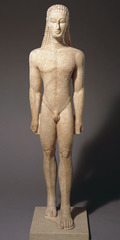
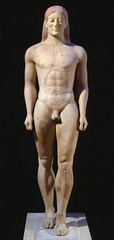
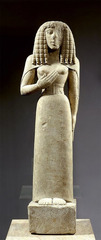
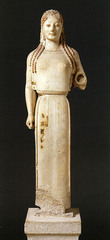
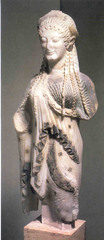
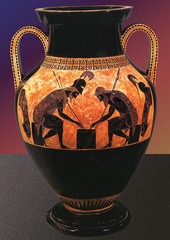
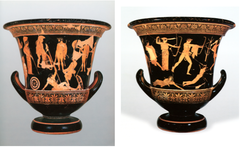
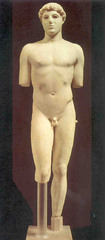
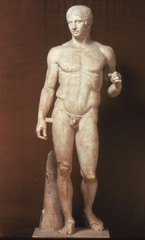
![Name: Parthenon
Date:
Medium: Marble
Location: The Acropolis in Athens, Greece
Artist: Iktinos and Kallikrates
Form: Doric columns outside, Ionic columns in the cella
Function: To house a massive statue of Athena
Content: X=2Y+1 [17 columns on side (x) and 8 columns on the front (y)]; 2 windows in cella
Context: Greeks had just won the Persian War and wanted to show off Name: Parthenon
Date:
Medium: Marble
Location: The Acropolis in Athens, Greece
Artist: Iktinos and Kallikrates
Form: Doric columns outside, Ionic columns in the cella
Function: To house a massive statue of Athena
Content: X=2Y+1 [17 columns on side (x) and 8 columns on the front (y)]; 2 windows in cella
Context: Greeks had just won the Persian War and wanted to show off](https://studytiger.com/wp-content/uploads/2016/01/name-parthenondate-medium-marblelocation-the-acropolis-in-athens-greeceartist-iktinos-and-kallikratesform-doric-columns-outside-ionic-columns-in-the-cellafunction-to-house-a-massi.jpg)
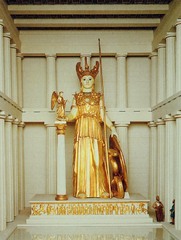

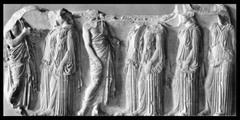
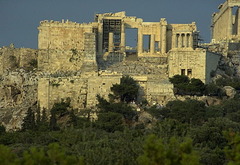
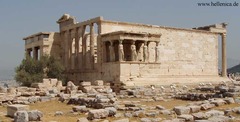
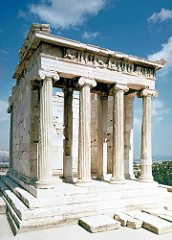
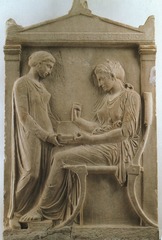
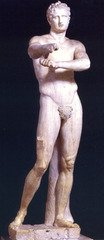
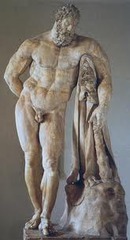
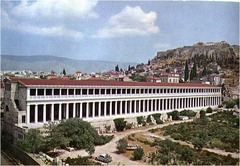
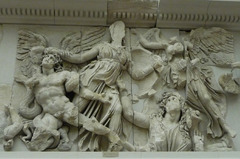
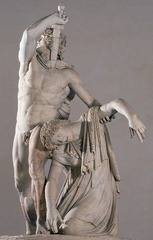
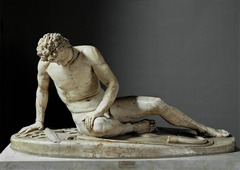
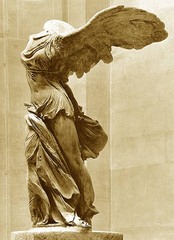

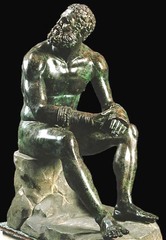
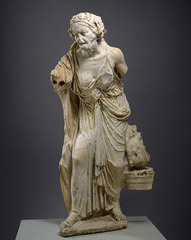
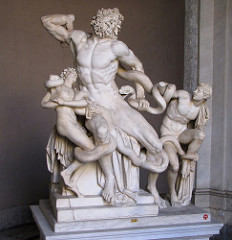
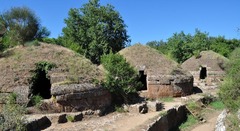
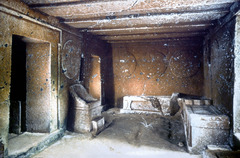
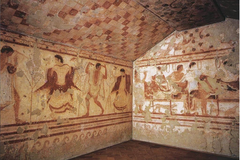
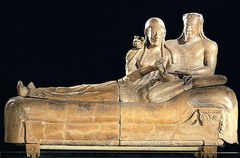
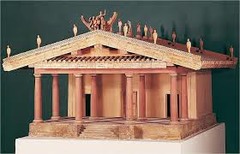
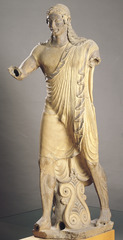
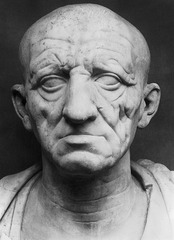
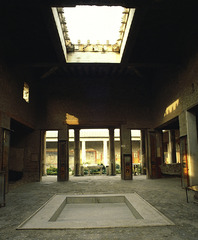
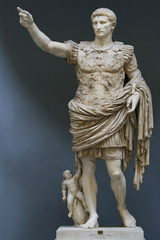
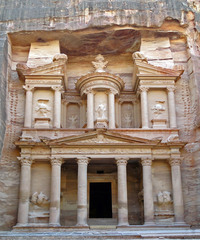
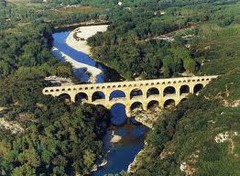
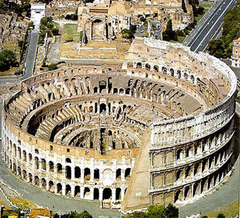
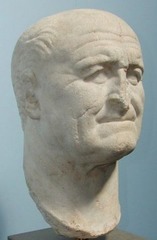
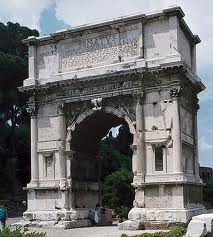
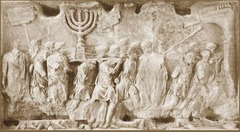
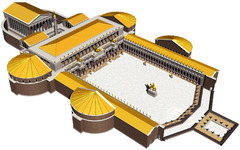
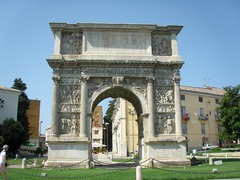
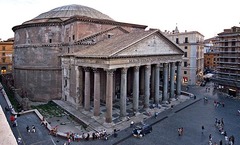
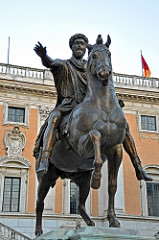
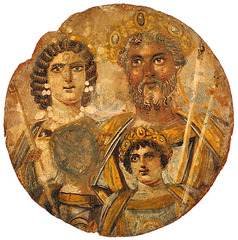
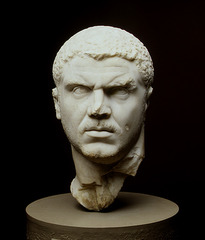
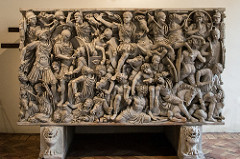
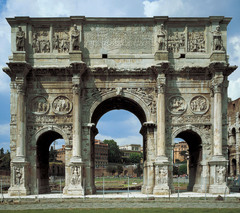
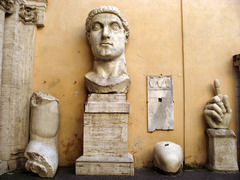
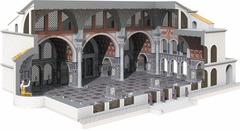









![Name: Parthenon
Date:
Medium: Marble
Location: The Acropolis in Athens, Greece
Artist: Iktinos and Kallikrates
Form: Doric columns outside, Ionic columns in the cella
Function: To house a massive statue of Athena
Content: X=2Y+1 [17 columns on side (x) and 8 columns on the front (y)]; 2 windows in cella
Context: Greeks had just won the Persian War and wanted to show off Name: Parthenon
Date:
Medium: Marble
Location: The Acropolis in Athens, Greece
Artist: Iktinos and Kallikrates
Form: Doric columns outside, Ionic columns in the cella
Function: To house a massive statue of Athena
Content: X=2Y+1 [17 columns on side (x) and 8 columns on the front (y)]; 2 windows in cella
Context: Greeks had just won the Persian War and wanted to show off](https://studytiger.com/wp-content/uploads/2016/01/name-parthenondate-medium-marblelocation-the-acropolis-in-athens-greeceartist-iktinos-and-kallikratesform-doric-columns-outside-ionic-columns-in-the-cellafunction-to-house-a-massi.jpg)











































